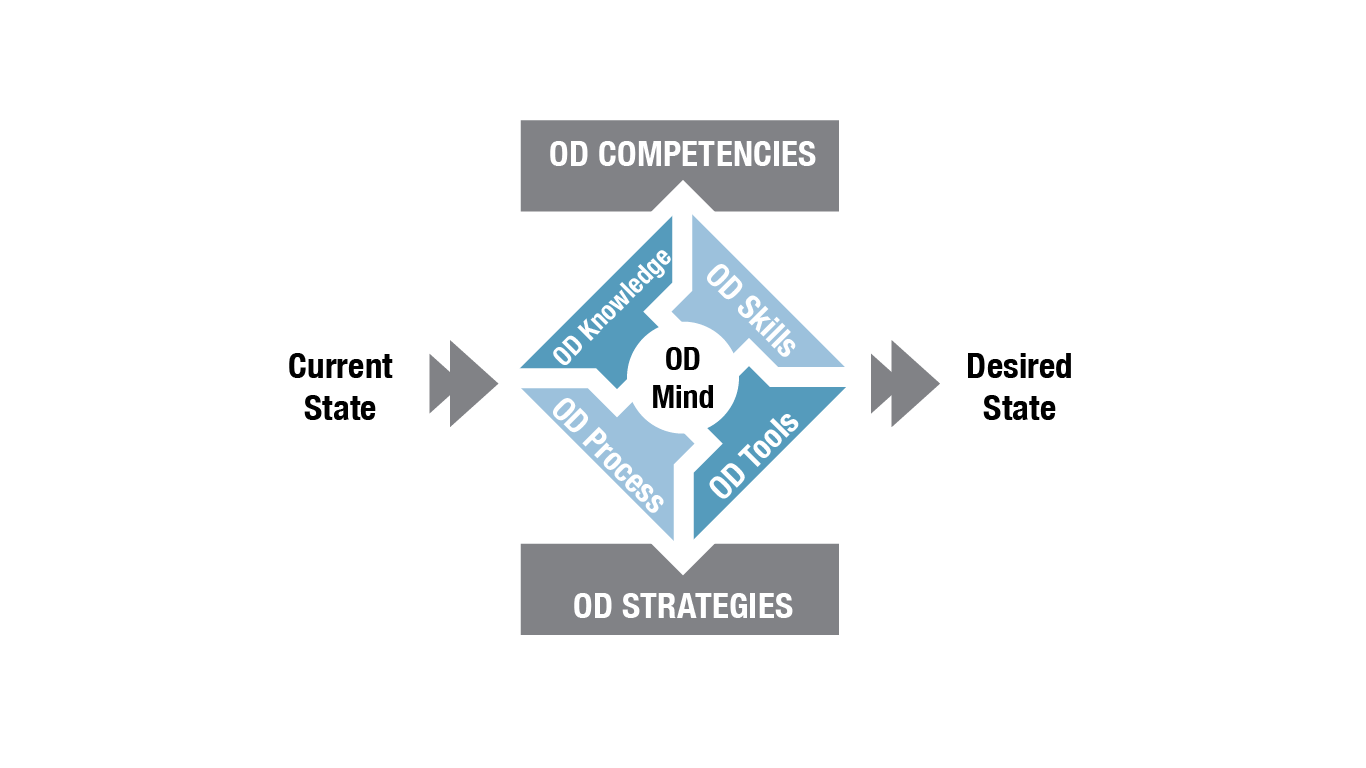What is Organization Development?
What is OD?
Organization Development (OD) has been evolving since the 1960s. Kurt Lewin established the foundation of OD by providing the theoretical foundation to guide OD practice. As stated by biographer Alfred Morrow (1969), “Lewin’s most enduring legacy was his innovative blending of science and practice”. OD practices were built on a philosophy that emphasized individual and organizational growth through collaboration. OD intervention approaches include action research, sensitivity training, team building, socio-technical systems, quality of work life, and survey feedback. One classic definition of organization development comes from Richard Beckhard’s 1969 Organization Development: Strategies and Models: Organization Development is an planned organizational-wide effort, that is managed from the top to increase organization effectiveness and health through planned interventions in the organizations “processes,” using behavioral-science knowledge.
Integral Perspective to OD
Most leaders today recognize the importance of organizational renewal and development. A solid grasp of the principle forces involved in organization development is crucial for leaders of corporations in the face of dynamic changes and uncertainties. Our view of change is that OD is dynamic, not just a linear move from the current state to the desired state; it is a non-linear mixture of complex forces in a cyclical balance around harmony, much like the Yin-Yang philosophy.
A successful OD intervention should consider how all phenomena relate to and balance against one another. This philosophy is embedded in the Integral OD Model, in which we emphasize systems thinking, tactical interventions, self-organizing and social interactions. In summary, organization development (OD) is not just “any changes to better an organization”; it is an integrated whole of mindsets, processes, skills and tactics of interventions applying behavioral science to the planned development that lead to organizational effectiveness. As such OD practitioners must be competent to enact it and committed to pursue it.

References
Arrow, A., McGrath, J., Berdahl, J. (2000). Small Groups As Complex Systems. USA: Sage Publications.
Bushe, G. R., &Marshak, R. J. (2015). Dialogic Organization Development: The Theory and Practice of Transformational Change. Oakland CA: Berrett-Koehler.
Dooley, K. (2004). Complexity Science models of Organizational Change and Innovation. In Poole, M and S Van de Ven (eds). Handbook of Organizational Change and Innovation (pp. 354-373). New York: Oxford University Press.
Eoyang, G., (2010). Human Systems Dynamics. In W. J. Rothwell, J. M. Stavros, R. L. Sullivan & A. Sullivan (Eds.), Practicing Organization Development (pp.465-475). USA: Pfeiffer.
Morgan, G. (2006). Images of Organization. USA: Sage Publications.
Olson, E. E., &Eoyang, G., H. (2001). Facilitating Organization Change. San Francisco: Jossey-Bass.
Snowden, D., & Boone, M. (2007). A Leader’s Framework for Decision Making of the circumstances they face. Harvard Business Review Journal.
